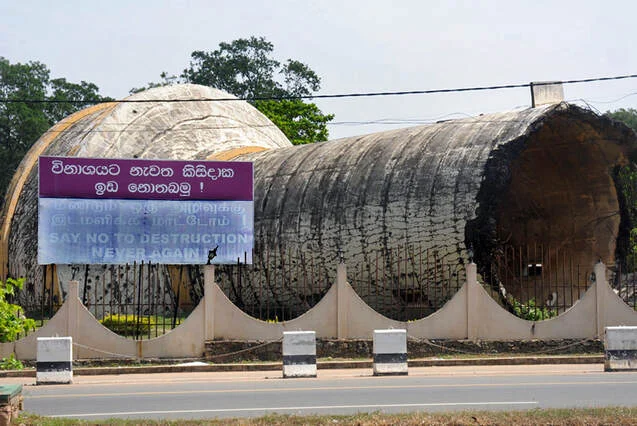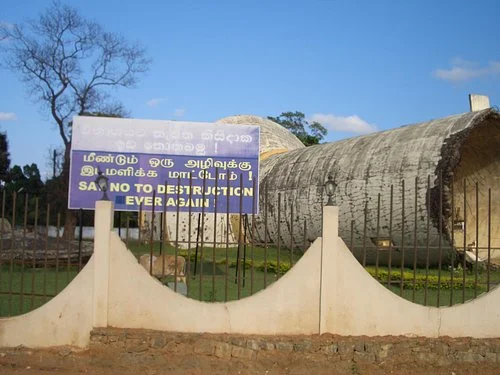All Provinces
Discovering Kilinochchi Water Tower: A Symbol of Resilience in Sri Lanka
Introduction
Nestled in the northern region of Sri Lanka, Kilinochchi is a place that embodies the nation’s tumultuous history and remarkable resilience. Among the landmarks that bear witness to this is the Kilinochchi Water Tower. While it might seem like an ordinary water structure at first glance, the tower is symbolic of the struggles and triumphs of the region. This article explores the historical, cultural, and touristic significance of the Kilinochchi Water Tower, a must-visit spot for travelers keen to explore Sri Lanka’s rich past and emerging future.
History of the Kilinochchi Water Tower
Kilinochchi, once the administrative hub of the Liberation Tigers of Tamil Eelam (LTTE), endured decades of civil war. The Kilinochchi Water Tower was originally built to supply water to the local population, but it soon became a symbol of control, power, and conflict during the Sri Lankan Civil War.
During the final phases of the conflict in 2009, the tower was heavily damaged, with photographs of the destroyed water tower making international headlines. It became an emblem of the war’s devastation but, more importantly, of the resilience of the people of Kilinochchi. After the war ended, the water tower was reconstructed as a mark of hope and rebuilding.

Architectural Significance
While the original tower’s design was purely functional, its modern reconstruction has become a symbolic structure. The Kilinochchi Water Tower stands tall with a simple cylindrical structure, designed to efficiently distribute water to the town and its surrounding areas. Its utilitarian purpose, juxtaposed with its emotional and historical weight, gives it a unique place in Sri Lanka’s architectural landscape.
Visitors to the water tower can witness the integration of modern infrastructure with the memories of war. The contrast between the reconstructed tower and the remnants of the original destruction adds depth to the experience of visiting this location.
Visiting the Kilinochchi Water Tower
Kilinochchi is not a typical tourist destination, but its off-the-beaten-path charm is perfect for those seeking an authentic experience. The Kilinochchi Water Tower is easy to spot, standing out against the town’s landscape. Tourists interested in Sri Lankan history, war tourism, or simply those curious about lesser-known regions will find Kilinochchi and its water tower a fascinating stop.
How to Get There
Kilinochchi is located around 100 kilometers south of Jaffna and about 330 kilometers from Colombo. Travelers can reach Kilinochchi by train, bus, or private car. The Northern Railway Line offers a scenic route from Colombo to Kilinochchi, with a journey time of around 5-7 hours. For those seeking a faster route, buses are available from Colombo, Jaffna, and other major cities.
Best Time to Visit
The best time to visit Kilinochchi Water Tower and the surrounding region is between December and March, when the weather is dry and comfortable. Temperatures are usually around 25-30°C, making it ideal for exploring the town and other nearby historical sites.


Nearby Attractions
While the Kilinochchi Water Tower itself is a significant attraction, the surrounding area offers additional sites of interest for travelers:
1. Elephant Pass War Memorial
Located a short drive from Kilinochchi, the Elephant Pass War Memorial commemorates the soldiers who fought during the civil war. It offers stunning views of the lagoons and is a poignant reminder of the sacrifices made during the conflict.
2. Iranamadu Tank
Just south of Kilinochchi lies the Iranamadu Tank, a massive man-made reservoir that is vital for the region’s agriculture. Bird watchers will enjoy the chance to see a variety of species that frequent the area, making it an excellent stop for nature enthusiasts.
3. Jaffna
For those who want to extend their trip, Jaffna is just an hour’s drive from Kilinochchi. The city offers a wealth of cultural and historical attractions, including the Jaffna Fort, Nallur Kandaswamy Kovil, and the scenic Casuarina Beach.
Travel Tips
- Respect Local Sensitivities: Kilinochchi is still recovering from the effects of war. When visiting, it’s important to be respectful of the local population and their history.
- Local Guides: To fully understand the significance of the water tower and other sites, consider hiring a local guide. They offer invaluable insights into the history and culture of the area.
- Photography: While photography is generally allowed at the Kilinochchi Water Tower, always ask for permission when taking pictures of people or sensitive areas. Some parts of the town still bear scars from the war, and discretion is advised.
- Amenities: Kilinochchi is a small town, and while there are a few restaurants and guesthouses, it’s a good idea to bring snacks and water if you plan on spending a day exploring the area. Restrooms can be scarce, especially near the water tower.
Conclusion
The Kilinochchi Water Tower may not be the most glamorous tourist destination in Sri Lanka, but it is undoubtedly one of the most poignant. Its history as a symbol of resilience makes it a must-visit for travelers seeking to understand Sri Lanka’s journey from conflict to peace. The tower stands as a reminder of the past while signaling hope for the future—a testament to the strength and spirit of the people of Kilinochchi.
Plan your visit to Kilinochchi and experience the depth of history that this unique destination offers. The Kilinochchi Water Tower is not just a piece of infrastructure; it is a story waiting to be explored.
See More Tourist Places Click Here
